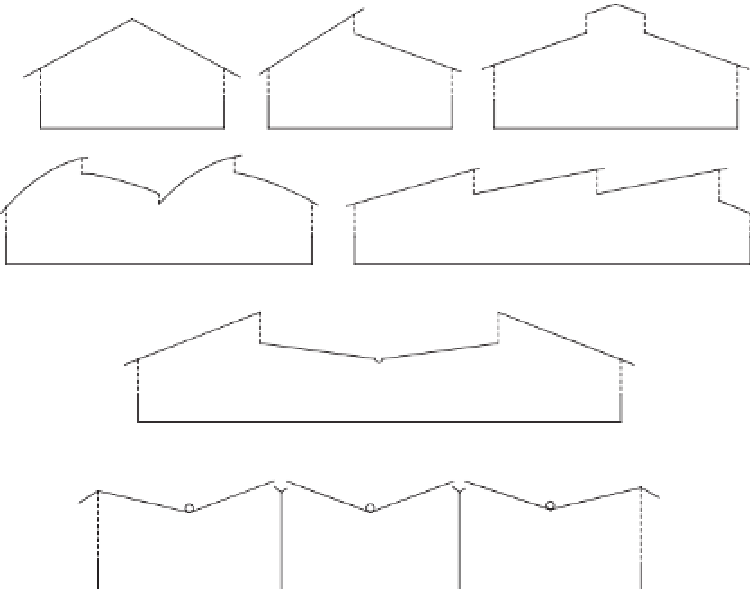Agriculture Reference
In-Depth Information
insect-proof screens in the vents, to avoid or
limit the entrance of insects, decreases the
efficiency of ventilation. Collection of rainfall
water must also be a priority. In the low-cost
type greenhouses, the general problem of
condensed water dripping is aggravated in
flat-roof greenhouses, inducing serious plant
protection problems as it facilitates the devel-
opment of diseases.
Thermal losses must be limited by
choosing a suitable cladding material and
making it as airtight as possible. Night
heating may be necessary for the crop, dur-
ing the critical winter months but its eco-
nomic profitability is questionable in many
cases.
throughout the year, and the solar radiation
(which may be excessive in some cases), are
the most outstanding characteristics of
humid tropical climates (Loveless, 1983;
Zabeltitz, 1999; Von Elsner
et al
., 2000a, b).
As a consequence, in these greenhouses
protection against the rainfall must prevail
(the greenhouse umbrella effect) and there
should be efficient permanent ventilation
(with vents frequently equipped with
screens to prevent the entrance of insects),
as well as a good height and sufficient
resistance to withstand strong hurricane
winds which are usual in such climates.
Figure 4.17 shows some of the solutions for
humid tropical climates. Achieving a com-
promise between these requirements, at a
low cost, is not easy.
humid tropical climates
4.9.5
Greenhouses for other
climate conditions
The high rainfall during the whole year or
during the rainfall season (which induces
high RH), the stability of the temperatures
(high during both the day and the night)
In dry desert climates, the extreme temper-
ature values are more acute than those
(a)
(b)
(c)
(d)
(e)
(f)
(g)
Fig. 4.17.
Greenhouse structures used in tropical regions (adapted from Zabeltitz and Baudoin, 1999).

